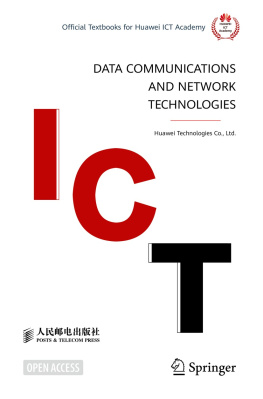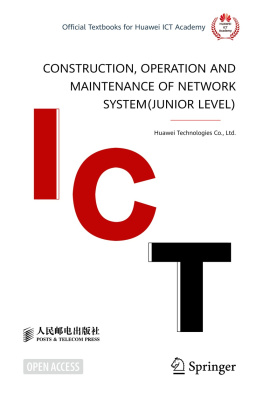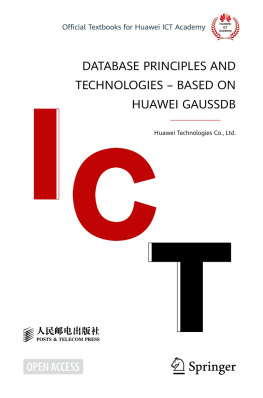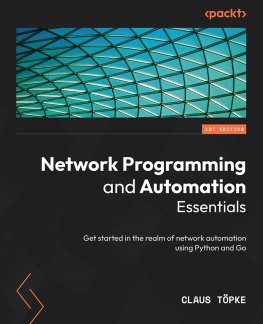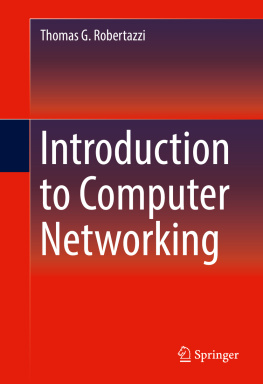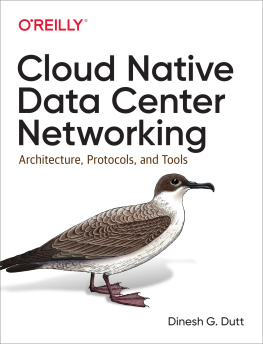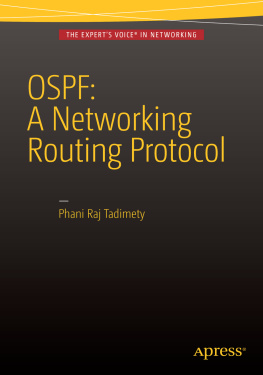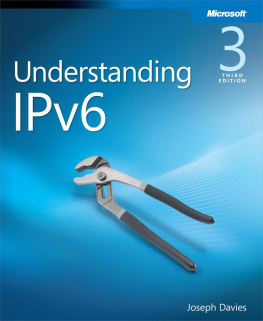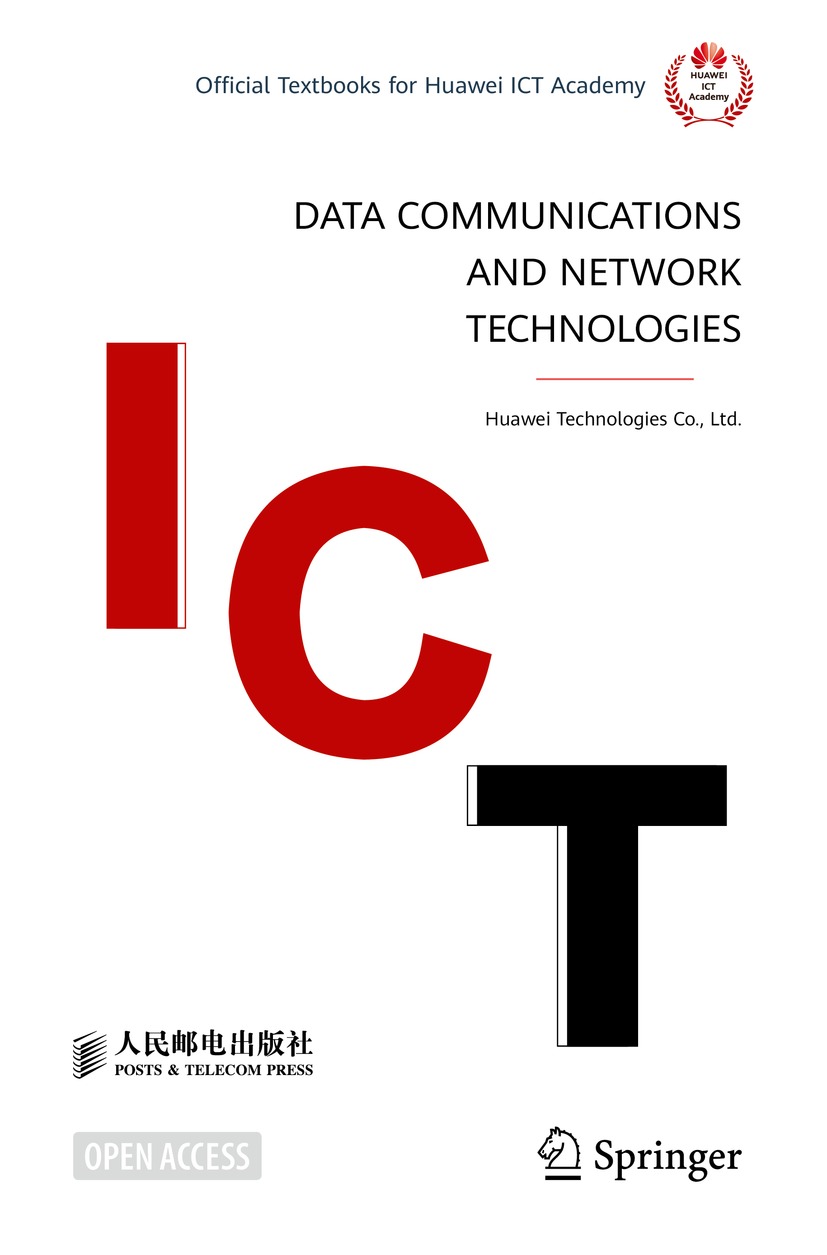Huawei Technologies Co., Ltd.
Hangzhou, China
ISBN 978-981-19-3028-7 e-ISBN 978-981-19-3029-4
https://doi.org/10.1007/978-981-19-3029-4
Jointly published with Posts & Telecom Press, Beijing, China
The print edition is not for sale in China (Mainland). Customers from China (Mainland) please order the print book from: Posts & Telecom Press.
Posts & Telecom Press 2023
This book is an open access publication.
Open Access This book is licensed under the terms of the Creative Commons Attribution-NonCommercial-NoDerivatives 4.0 International License ( http://creativecommons.org/licenses/by-nc-nd/4.0/ ), which permits any noncommercial use, sharing, distribution and reproduction in any medium or format, as long as you give appropriate credit to the original author(s) and the source, provide a link to the Creative Commons license and indicate if you modified the licensed material. You do not have permission under this license to share adapted material derived from this book or parts of it.
The images or other third party material in this book are included in the book's Creative Commons license, unless indicated otherwise in a credit line to the material. If material is not included in the book's Creative Commons license and your intended use is not permitted by statutory regulation or exceeds the permitted use, you will need to obtain permission directly from the copyright holder.
This work is subject to copyright. All commercial rights are reserved by the author(s), whether the whole or part of the material is concerned, specifically the rights of translation, reprinting, reuse of illustrations, recitation, broadcasting, reproduction on microfilms or in any other physical way, and transmission or information storage and retrieval, electronic adaptation, computer software, or by similar or dissimilar methodology now known or hereafter developed. Regarding these commercial rights a non-exclusive license has been granted to the publisher.
The use of general descriptive names, registered names, trademarks, service marks, etc. in this publication does not imply, even in the absence of a specific statement, that such names are exempt from the relevant protective laws and regulations and therefore free for general use.
The publishers, the authors, and the editors are safe to assume that the advice and information in this book are believed to be true and accurate at the date of publication. Neither the publishers nor the authors or the editors give a warranty, expressed or implied, with respect to the material contained herein or for any errors or omissions that may have been made. The publishers remain neutral with regard to jurisdictional claims in published maps and institutional affiliations.
This Springer imprint is published by the registered company Springer Nature Singapore Pte Ltd.
The registered company address is: 152 Beach Road, #21-01/04 Gateway East, Singapore 189721, Singapore
Preface
Computer network textbooks are mainly divided into two categories: computer network textbooks for colleges and universities, and network engineer certification textbooks of vendors such as Huawei, H3C, and Cisco.
Computer network textbooks for colleges and universities mainly focus on computer communication protocols and organize contents of each chapter by TCP/IP layers, without specific experiments and operations for these computer network theories. As a basic course, it is reasonable to introduce principles and theories, which are applicable to devices of all network vendors. Students in colleges and universities have zero experience in operating and configuring network devices, and have not even seen them before, so they are not well informed about the various applications on the Internet . Consequently, they will feel learning theoretical network courses relatively abstract and will not realize how these theories can contribute to their future work.
This book uses Huawei network devices to set up computer networks and uses virtual machines to construct learning environments so as to design experiments and cases for computer network theories. It can train network engineers who can both have a deep understanding on the theories of computer data communications and use Huawei routers , switches as well as wired and wireless devices to design and set up campus networks .
Content Organization of This Book
This book contains 18 chapters, and the content of each chapter is briefly described as follows:
Chapters explain the theoretical basis of communication technologies, including data communications basics, TCP/IP protocol, management of Huawei devices, IP address, and subnetting.
Chapter explains routing basics, including the basic concepts of routing, static routing , route summarization, and default routing.
Chapter introduces dynamic routing , including introduction to dynamic routing , dynamic routing protocol OSPF, and the configuration of OSPF protocol.
Chapter explains how switches work, VLAN and inter-VLAN routing.
Chapter elaborates Spanning Tree Protocol, link aggregation , Smart Link, and Monitor Link technology.
Chapter is an introduction to network security, including the working principles of ACL and AAA.
Chapter illustrates network address translation , including NAT types, implementation of Static NAT , NAPT , Easy IP, and implementation of NAT Server .
Chapter explains Dynamic Host Configuration Protocol , enabling DHCP Server on the router so as to configure IP addresses for the computers in the network .
Chapter describes the enterprise network WLAN, introducing the basic concepts of WLAN, the working principles and configuration implementation of WLAN.
Chapter covers IPv6 , including IPv6 addressing , IPv6 address configuration, IPv6 static routing and dynamic routing .
Chapter illustrates WANs, mainly PPP protocol and PPPoE protocol.
Chapter explains the typical networking architectures and case practices of campus networks , including the basic concepts and the case practices of the campus network . Among them, the hands-on practice includes the design of a networking scheme, VLAN design and planning, IP address design and planning , IP address assignment methods, routing design , WLAN design and planning, reliability design, egress NAT design , and security design.
Chapter covers network management and operation and maintenance, including SNMP principles and configuration, and the configuration of Network Time Protocol (NTP) to synchronize network equipment time.
Chapter explains SND and NFV .
Chapter introduces network programming and automation, using Python for network device management.
Resources of this Book

